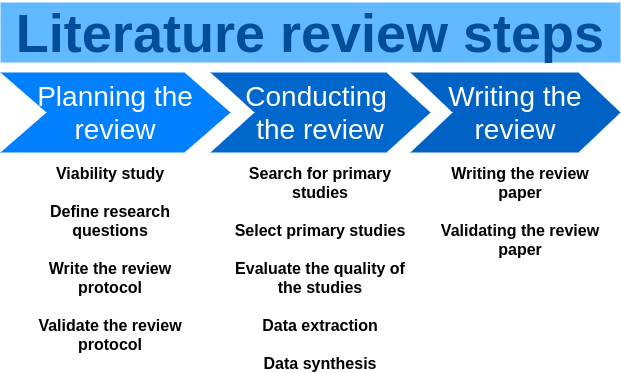Parameters to Write a Perfect Literature Review|2025
/in General Articles /by BesttutorDiscover the key parameters to write a perfect literature review. Learn how to structure, analyze, and synthesize research to build a solid foundation for your academic work.
A literature review is a critical component of research papers, theses, dissertations, and academic articles, synthesizing existing studies on a given topic. It provides a comprehensive understanding of the research that has already been done, identifies gaps in the literature, and sets the stage for new research by explaining what is known, what needs further exploration, and how the current study will add to the field.
Writing a perfect literature review involves various steps and parameters to ensure its quality and effectiveness. In this paper, we explore the key parameters to follow while writing a literature review, providing examples, and sample structures that can serve as references for researchers. We also address common pitfalls to avoid when conducting a literature review and conclude with practical guidelines for creating a well-structured, informative, and impactful review.
Table of Contents
TogglePurpose of a Literature Review
The purpose of writing a literature review is to:
- Provide a summary and critical evaluation of existing research.
- Identify gaps in the current body of knowledge.
- Analyze trends, debates, and controversies within a field.
- Establish the theoretical framework for the study.
- Justify the research question, hypothesis, or objective.
- Demonstrate the researcher’s familiarity with relevant studies and theories.
Parameters to Follow When Writing a Literature Review
To craft a comprehensive and well-structured literature review, several key parameters should be followed. Below are the critical elements that constitute a perfect literature review.
a. Clear Scope and Focus
A literature review should be focused and specific. It must clearly define the scope of the research topic. This includes:
- Defining the Research Problem or Question: Start by establishing the central research question or hypothesis. This should serve as the anchor for all literature reviewed.
- Selecting Relevant Studies: Determine which studies are most relevant to the research question. This means including studies that align with the theme and omit unrelated ones.
- Time Frame and Geographical Limitations: Sometimes, literature reviews can focus on particular periods (e.g., studies conducted in the last 10 years) or geographical regions, depending on the scope of the research question.
b. Comprehensive Coverage
A thorough literature review includes an extensive range of relevant studies. While it is important to be concise, the review must not overlook significant works within the field. Some considerations for ensuring comprehensive coverage are:
- Inclusion of Key Studies: Ensure the most influential studies and theoretical frameworks are included, especially seminal papers and landmark studies.
- Categorizing Studies: Classify studies by themes, methodologies, or findings, which can be especially helpful for comparative analysis.
- Incorporating Varied Sources: A combination of peer-reviewed journal articles, books, conference papers, and reliable reports should be included.
c. Critical Analysis and Synthesis
A good literature review does not just summarize studies but critically engages with them. Critical analysis means identifying the strengths and weaknesses of each study, discussing the methodologies used, and comparing different findings. Here are some parameters for critical analysis:
- Evaluate Methodologies: Assess whether the studies used appropriate methodologies and discuss the strengths and limitations of these approaches.
- Identify Gaps: Note where current literature falls short in addressing particular questions or concerns. These gaps may suggest avenues for new research.
- Synthesize Findings: Integrate findings from different studies and highlight their collective contributions to the field.
d. Organized Structure
The organization of the literature review is essential for ensuring clarity and coherence. A well-organized review helps the reader follow the flow of arguments and conclusions. The following structure can be useful:
- Introduction: A brief introduction to the research topic, outlining the objectives of the literature review and its relevance.
- Main Body: A section divided into different themes or categories based on the analysis. This section should provide a detailed discussion of studies, comparing and contrasting findings.
- Conclusion: A summarizing paragraph that synthesizes the key points of the literature review, reinforces the need for the current research, and highlights the research gaps.
A sample literature review for research paper might follow this structure to present existing research clearly and logically.
e. Logical Flow and Coherence
A literature review must flow logically from one study to the next. The reader should not feel lost in the transition between studies. Here’s how to achieve this:
- Transitions Between Studies: Use linking sentences and paragraphs that connect different studies. For example, one could introduce a new study by saying, “Building on Smith’s (2015) findings, Johnson (2018) explored…”
- Avoid Fragmentation: Each section of the review should contribute to the overall argument. Do not treat studies as isolated pieces but rather as part of a bigger conversation.
f. Avoiding Plagiarism
It is crucial to ensure that all ideas, quotes, and paraphrased content are properly cited. Always follow citation guidelines, whether APA, MLA, or Chicago style, and ensure proper attribution.
- Quoting and Paraphrasing: When using direct quotes, include the page number and ensure it’s appropriately referenced. Paraphrased content should also be cited to avoid plagiarism.
g. Proper Citation Style
The citation style must be consistent throughout the review. Whether you’re writing a literature review sample PDF or academic paper, it’s essential to use the right format:
- APA Style: Common in social sciences, psychology, and education.
- MLA Style: Preferred for humanities and liberal arts.
- Chicago Style: Often used in history, philosophy, and some social sciences.
h. Clarity and Conciseness
While it’s important to provide a detailed review, brevity is also essential. Avoid including unnecessary information or overly long descriptions. The writing should be:
- Clear: Avoid jargon unless absolutely necessary, and define terms when introducing them.
- Concise: Present ideas clearly, keeping the focus on the most important aspects of each study.
 Sample Literature Review Example
Sample Literature Review Example
To understand how these parameters work together, it is helpful to look at a literature review example. Below is an excerpt from a sample literature review on the impact of social media on mental health:
Sample Literature Review Excerpt:
The impact of social media on mental health has been widely debated in recent literature. According to Smith (2015), social media use is strongly correlated with increased feelings of loneliness among adolescents. However, Johnson (2018) argues that social media can enhance feelings of connection and support, particularly in marginalized communities. Studies by Williams et al. (2017) and Brown (2020) further emphasize the dual nature of social media’s impact, suggesting that its effects on mental health are contingent on how it is used.
While Williams et al. (2017) found that active participation in online support groups can foster positive outcomes, Brown (2020) identified a negative correlation between passive scrolling and increased anxiety levels. These divergent findings highlight the need for more nuanced studies that examine the specific mechanisms at play.
In this example, we see a synthesis of different studies, with critical analysis and comparison of their findings. The structure is coherent, and there is a logical flow from one idea to the next, linking studies based on their results.
Literature Review Conclusion Example
The literature review conclusion example synthesizes the key points discussed and reinforces the need for the current research. Here’s a sample conclusion:
Sample Conclusion:
In conclusion, while there is evidence to suggest both positive and negative effects of social media on mental health, there remains a significant gap in understanding the specific contexts that mediate these effects. The current body of research often fails to distinguish between different types of social media use, overlooking the role of active versus passive engagement. This literature review highlights the importance of exploring these distinctions in future studies, particularly in light of emerging technologies and platforms.
Common Mistakes in Writing a Literature Review
To ensure the literature review is perfect, avoid these common mistakes:
- Lack of Clear Focus: A review that tries to cover too many studies or themes can lack coherence. Stick to the central research question.
- Over-Summarization: A literature review should not merely summarize studies but engage critically with them.
- Neglecting Key Studies: Failing to include seminal studies or overlooking important works can make the review incomplete.
- Poor Structure: A poorly organized review can confuse readers. Ensure a logical progression from introduction to conclusion.
Conclusion
Writing a perfect literature review requires a balance between thorough research, critical analysis, and clear presentation. By following the key parameters—such as defining a clear scope, engaging critically with sources, maintaining coherence, and ensuring proper citation—researchers can create literature reviews that effectively support their research objectives. Whether you are looking for a sample literature review for research paper, or a literature review sample PDF, adhering to these guidelines will help you craft a high-quality review that adds value to your academic work.
Needs help with similar assignment?
We are available 24x7 to deliver the best services and assignment ready within 3-4 hours? Order a custom-written, plagiarism-free paper



